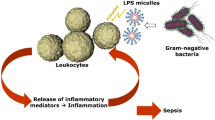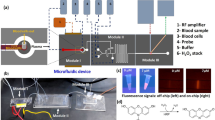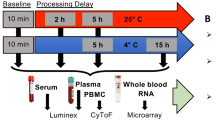Abstract
IN treating plasma from time-expired blood according to the method described by McFarlane1 for the removal of lipoid from human serum, it was found that in addition to extracting lipoid from combination with plasma protein, the flbrinogen was also removed. The quantitative removal of fibrinogen was effected by adjusting the plasma with citric acid to pH 5.4 prior to freezing to â 30° C. with excess ether. Solutions of extracted plasma protein obtained in this manner, after the removal of the dissolved ether and readjustment to p.H 7.0, have provided a satisfactory transfusion fluid, remaining crystal clear for more than two years2.
This is a preview of subscription content, access via your institution
Access options
Subscribe to this journal
Receive 51 print issues and online access
$199.00 per year
only $3.90 per issue
Buy this article
- Purchase on SpringerLink
- Instant access to full article PDF
Prices may be subject to local taxes which are calculated during checkout
Similar content being viewed by others
References
McFarlane, A. S., Nature, 140, 139 (1942).
Kekwick, R. A., McFarlane, A. S., and Mackay, M. E., unpublished.
Cohn, E. J., et al., J. Clin. Invest, 23, No. 4 (1944).
Brit. Patent Application 31199/45.
Author information
Authors and Affiliations
Rights and permissions
About this article
Cite this article
KEKWICK, R., MACKAY, M. & RECORD, B. Fractionation of Human Plasma with Ether. Nature 157, 629 (1946). https://doi.org/10.1038/157629a0
Issue date:
DOI: https://doi.org/10.1038/157629a0
This article is cited by
-
Passive prophylaxis of measles
Archiv f�r die gesamte Virusforschung (1965)
-
Demonstration of Incomplete Rh-Antibodies by Alpha-Globulin
Nature (1950)
-
The plasma proteins and their fractionation
Ergebnisse der Physiologie Biologischen Chemie und Experimentellen Pharmakologie (1950)
-
Sodium Citrate Concentration in Ether-extracted Plasma
Nature (1948)



